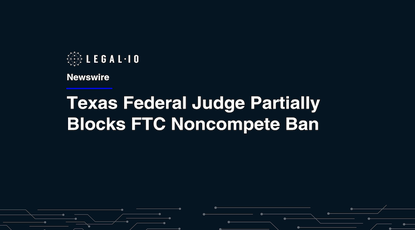Introduction
In litigation, a party will often use a third-party subpoena to obtain documents from individuals, businesses, or other entities that are not parties to the lawsuit. Many individuals and businesses have received a third-party subpoena and wondered whether they should respond, how to respond, what, if any concerns they should have, and what, if any, precautions they should take.
The following guidelines and steps explain how to approach responding to a third-party subpoena for documents, and highlight issues you should consider when responding. (In a future article, I will address some additional considerations for responding to a third-party subpoena for testimony.)
Initial Steps to Take When You are Served with a Third-Party Subpoena for Documents
When you are served with a third-party subpoena for documents, there are several critical steps you should take to ensure you will comply with the subpoena and its corresponding requirements.
Consider Engaging an Attorney.
If you are a business and do not have an in-house legal department, or if you are an individual and do not have an attorney, you should consider engaging an attorney. An attorney will help guide you through the process, including many of the items and steps in this article. For instance, an attorney would be helpful if the subpoena requests a large number of documents.
An attorney will also help you understand whether you have any legal exposure you should worry about. It is not uncommon for a party in litigation to use the subpoena process to obtain information regarding a non-party for purposes of determining whether it should file a lawsuit against that non-party. There is nothing improper about that strategy so long as the information being obtained is relevant to the litigation.
I have been involved in these situations, and it is surprising to see how often a recipient of a subpoena is unaware of the secondary risk of legal exposure lurking beneath the subpoena process. An attorney will help mitigate that exposure by formulating an effective strategy for responding to and/or challenging the subpoena.
Businesses: Notify Anyone Else of Importance
If you are an individual, and the subpoena is directed to you personally, whether you should notify anyone else will depend on the types of documents being requested. If any documents requested are in someone else’s possession, but can be considered to be in your “possession, custody, or control,” you should notify the person who has those documents that you were served with a subpoena. Examples of such documents include, but are not limited to, documents in the possession of your accountant, documents you provided to an attorney, and documents you provided to a consultant.
If you are a business, you should notify your lead in-house attorney or general counsel, any other in-house attorneys, high-level corporate officers and executives, and, if necessary, an outside attorney with appropriate litigation experience. In addition, if any documents are in the possession of an affiliated company (such as a partner, parent, or subsidiary), you should notify that company of receipt of the subpoena.
Calendar the Deadline for Responding to the Third-Party Subpoena
When you are served with a third-party subpoena, you should immediately mark the date on your calendar when a response is due. The date will be identified on the subpoena itself. (In rare instances, the date identified will be too soon, in which case there are steps you can take to protect yourself. See below.)
If you believe you may need an extension of time to respond, you should request one right away. In these situations, an attorney is a good conduit through which to negotiate extensions. Any requests for extensions and any agreed extensions should be reduced to writing. An email memorializing the communication will suffice.
Businesses: Issue a “Litigation Hold” or “Legal Hold” Notice
When a business is served with a subpoena, to ensure these documents can be identified and provided, the business should issue a “litigation hold” or “legal hold” notice to its employees. This is a written document that provides notice that employees must preserve any documents or other information that may be responsive to the subpoena. Such documents may include emails, recordings, handwritten notes, and electronic documents such as Microsoft Word documents or Microsoft Excel spreadsheets.
An attorney usually has a form for litigation holds that can be used and adapted for your purposes. These notices should be broad and encompass any kind of document you believe has been generated or used by your business. A litigation hold, in part, demonstrates that you fulfilled your initial obligation to locate documents responsive to the subpoena.
Begin Collecting Documents
An individual who is served with a third-party subpoena can usually collect the documents requested by the subpoena without significant effort. An individual should search for documents in locations where he or she has either worked on or created documents. These locations include file cabinets, email accounts, social media accounts, desk drawers, etc.
A business, however, can experience some difficulties. The document collection process can prove daunting if the volume of responsive documents is large, or if there are more than a few employees who have such documents. A business should adopt the following steps for collecting documents:
Identify all individuals who have responsive documents
A business must identify anyone who potentially may have documents responsive to the subpoena. These individuals can include employees, attorneys, independent contractors, or IT personnel. It is better to be overly broad in this effort so no one is overlooked.
Instruct individuals on how to search for and collect documents
Once a business has identified individuals who have responsive documents, it should instruct them on what to search for (i.e., the requests in the subpoena will provide guidance on what to search for), how to collect it, who to give it to, and any precautions that should be taken. If you are relying on individual employees to search for and collect documents, they must be monitored. I cannot emphasize the importance of that directive enough. If an employee finds him/herself in a troublesome situation with an incriminating email or other document, they may take matters into their own hands and delete or destroy the document. This conduct exposes you to significant penalties in connection with the litigation discovery process. You should ensure employees are acting appropriately and turning over all responsive documents, good or bad. If a large volume of email or electronic documents is involved, a business should engage an attorney or an outside vendor to assist with, and even conduct, the search and collection effort. Outsourcing this process will often be more cost-effective for a business than committing valuable internal resources to the endeavor.
Review the Documents Collected for Responsiveness, Privilege, and Confidentiality
Once you have assembled all the documents you gathered or instructed others to gather for you, you should review them carefully for three purposes:
- if a document is not responsive to a request in the subpoena (i.e., it does not relate to any request in the subpoena), you have no obligation to – and should not – produce it. This suggestion, in part, relates to my earlier point about engaging an attorney to help you determine if the subpoena is a means for obtaining information about you for a future lawsuit. You need to be very careful about the information you disclose in response to a subpoena. Most of it may be harmless to you. But if a single, unresponsive document slips through the cracks, and that document provides some basis for claims against you, you will regret not carefully applying this step. So, as a general matter, if the information you have is not responsive, you should withhold it.
- if a document is privileged – it is a communication between you and an attorney for the purpose of rendering legal advice, or it is a document you prepared at the direction of an attorney for purposes of litigation – you have no obligation to disclose it. Instead, all you need to do is list it on a “privilege log” and advise the party that served you with the subpoena that it exists and some basic information about it (i.e., type of document, date, author, recipient, and a brief description of the subject matter).
- if a document is confidential – it contains sensitive financial information or trade secrets – you may request that the party that served you with the subpoena sign a confidentiality agreement that restricts disclosure of the document to anyone else. You may withhold any confidential documents you intend to produce until a confidentiality agreement is signed.
Determine How to Respond to, or Challenge, the Third-Party Subpoena
Once the document have been collected and reviewed, you must determine how to respond to the subpoena. Depending on the nature of the subpoena, the types of requests in the subpoena, and the types of documents you have, there are several options:
Comply with the subpoena and provide the requested documents
The easiest option is to comply with a subpoena and produce the requested documents. If there are no concerns regarding issues with the subpoena, legal exposure, the volume of documents, or any privilege or confidentiality issues, this option may be the most appropriate course of action.
For physical documents, the recipient of a subpoena can produce photocopies. If the number of documents is large, you can produce scanned copies of the documents on a CD or DVD.
You should keep track of the documents you produce by placing a “Bates number” on each page or image (i.e., “DOC001, DOC002, DOC003 . . .”). The DVD you turn over to the party that served you with the subpoena should have a label affixed to it that identifies you, the date, and the range of Bates numbers on the documents contained on the DVD.
When you produce documents, you have two options regarding how to organize them. You can either (i) produce them “as they are kept in the ordinary course of business,” or (ii) organize and label them to correspond with the requests in the subpoena. You may choose which option to adopt. The former option – producing them as they are kept in the ordinary course of business – is likely the least burdensome method.
Alternatively, you can invite the party that served you with a subpoena to inspect the documents, instead of producing them. However, this approach is less common nowadays because the most common information being requested are emails.
For electronic documents – or what is referred to as “electronically-stored information” – as a general rule, you must produce them in the form in which they are ordinarily maintained. For example, if a Word document is maintained on your hard drive, you must produce that document as a Word file; you may not print it and produce it in hard copy. (Some parties will not care how you produce this information. However, you should be aware of this requirement.) As a precaution, you should discuss this process with the party that served you with the subpoena, so there is no confusion.
You do not need to produce electronic documents that are not reasonably accessible because of undue burden or cost. For example, if documents on an old hard drive were boxed up, sent three time zones away, locked in a wooden box, and stored 10 floors beneath the ground in the middle of the desert, you will likely not be forced to produce those documents because the cost and effort required to re-obtain them would be burdensome.
When you produce the documents, they should be mailed or hand-delivered to arrive on the date of production stated in the subpoena. You could also email them, but sometimes the volume of documents is too large to make it through an email server.
You are not required to provide the documents to every party participating in the litigation; rather, the party that served you with the subpoena has an obligation to provide copies of your production of documents to the other parties.
If you have no documents that are responsive to the subpoena, you should nevertheless respond in writing and state that there are no responsive documents. You should always put these types of communications in writing.
Object to the subpoena
If you want to object to any part of the subpoena, you may serve the other side with written objections, usually before the earlier of the date stated in the subpoena or 14 days after you receive the subpoena. If you do not provide objections before this deadline, you will waive the right to assert any objections. Moreover, if you do not object and then fail to comply with the subpoena, you may be held in contempt of court (see below). Depending on the forum, these objections may look like formal response to written discovery in litigation, or they may be stated in a letter to the party that served you with a subpoena.
Every objection should state the legal grounds for the objection. If you are objecting to any or all of the requests in the subpoena, you should state your objection to each request separately.
If you decide to object to the subpoena, there are several grounds for objections: (i) the subpoena seeks irrelevant documents; (ii) the subpoena does not allow a sufficient time to comply with it; (iii) the subpoena requests disclosure of privileged or confidential information; (iv) the subpoena requests are vague and/or ambiguous; (v) the subpoena subjects you to undue burden or expense; or (vi) the subpoena was not served properly.
Providing objections suspends your obligation to comply with the subpoena until or unless a court orders compliance, or you reach an agreement with the party that served you with the subpoena.
Move to quash the subpoena
If you do not wish to comply with the subpoena, you may file a motion to quash it before the date set forth on the subpoena. Depending on which forum you are in, you will likely need to confer with the party that served you with the subpoena before filing a motion. There may be other procedural requirements, so – again – an attorney can help you navigate these requirements. If you do not follow these rules, the court may deny your motion without consideration.
A motion to quash must be based on valid grounds. A court will usually grant a motion – and quash a subpoena – if it (i) does not allow you a reasonable time to respond (depending on the jurisdiction, a minimum of 10-14 days); (ii) requires that you produce documents at a location more than 100 miles away; (iii) subjects you to undue burden (i.e., excessive time, effort, or hardship required to respond to the subpoena); (iv) requires that you produce privileged information; or (v) pertains to a lawsuit over which the court lacks subject matter jurisdiction.
There may be other grounds to support a motion to quash, such as technical defects on the face of the subpoena, or that the subpoena was not served properly. However, the grounds above represent your best bet for quashing a subpoena.
Usually, the filing of a motion to quash means you can refuse to comply with the subpoena until the court either denies the motion, or you reach an agreement with the party that served you with the subpoena. (This varies by jurisdiction, so be sure to check the applicable rules of procedure to determine the effect of filing a motion to quash.)
The mechanics of filing the motion may prove challenging depending on which court the lawsuit is pending. For example, if the lawsuit is pending in federal court, a motion to quash (and all other court documents) must be filed electronically through the court’s filing system. An attorney with experience in federal court can assist you with this process.
If the court grants the motion, it may quash the subpoena entirely, modify it, or order that you comply with it on specified conditions. If the court denies the motion, you will usually have to comply with it as written.
Move for a protective order
Alternatively, you may file a motion for protective order – again, before the date set forth in the subpoena – that asks for the following relief: (i) forbidding the disclosure of some specific category of information; (ii) establishing parameters (i.e., time and place) for the production of documents; (iii) ordering another method of obtaining the information sought by the subpoena; or (iv) requiring that confidential information not be disclosed.
The guidelines above regarding conferring with the other side, engaging an attorney, and following the applicable rules of procedure (particularly for filing) all apply with respect to motions for protective order as well.
To persuade the court to grant a motion for protective order, you normally must demonstrate that the production of documents requested by the subpoena will cause a clearly-defined and serious injury. For example, the production of documents will cause someone embarrassment, will violate a privacy interest, or will violate a confidentiality agreement. In addition, a motion for protective order could argue that the documents requested are not being sought for a legitimate purpose.
Remember my cautionary instruction above about a party using a subpoena to gain information for a potential lawsuit against a non-party? If you have a reasonable belief that is being done here, you should argue that in a motion for protective order.
Depending on the forum you are in, the mere filing of a motion for protective order may not relieve you of your obligation to comply with the subpoena. Thus, you should request a “temporary stay” of compliance while the court resolves the motion.
Contact the party that served the subpoena to attempt to resolve the requests informally
Instead of proceeding through the legal process outlined above, you could contact the party that served you with the subpoena and attempt to negotiate a narrower scope for the information requested, and a convenient time for producing that information. In my experience, this approach is highly effective – again, if you are an innocent, neutral third party with no legal exposure – because the party that served you with the subpoena will usually welcome the opportunity to work with you. It will also help you minimize your costs for complying with the subpoena.
Contact the adverse party
One other alternative to the response methods outlined above is contacting the party who is adverse to the party that issued you the subpoena. You should normally do this if the adverse party has a personal or privacy interest in the information requested by the subpoena. If the adverse party does, in fact, have such an interest, it may file a motion to quash the subpoena. For example, if you are an accounting firm, and the party served you with a subpoena requesting sensitive documents concerning a business transaction involving the adverse party, the adverse party may file a motion to quash the subpoena. This approach helps you leverage the adverse party’s efforts and save time and money.
Consequences of Not Complying with a Subpoena
If the third-party subpoena for documents you received is valid, and there are no grounds for challenging, you must comply with it and respond with the production of documents requested. If you do not comply, you may be held in contempt of court or fined or imprisoned.
Thus, you should make every effort to take appropriate steps to address, evaluate, and respond to a third-party subpoena. There are often various issues and considerations you should review – especially with an experienced attorney – when undertaking the process of gathering responsive documents and preparing a response.
Meet the author: Robert Fojo
 |
Robert assists clients with business and commercial transactions, civil litigation, and complex dispute resolution. He helps businesses defend themselves when lawsuits are filed against them and prosecute their own lawsuits when they have been wronged. In this regard, Robert handles a wide variety of legal issues, including general commercial disputes, construction matters, class action lawsuits, real estate disputes, disputes concerning the competitive bidding process and government procurement and contracting, employment claims, and appellate litigation. Robert also assists small-to-medium size privately held businesses, venture investors, and entrepreneurs with cost effective legal solutions that address their specific business needs. You can view his LawGives Profile here |











